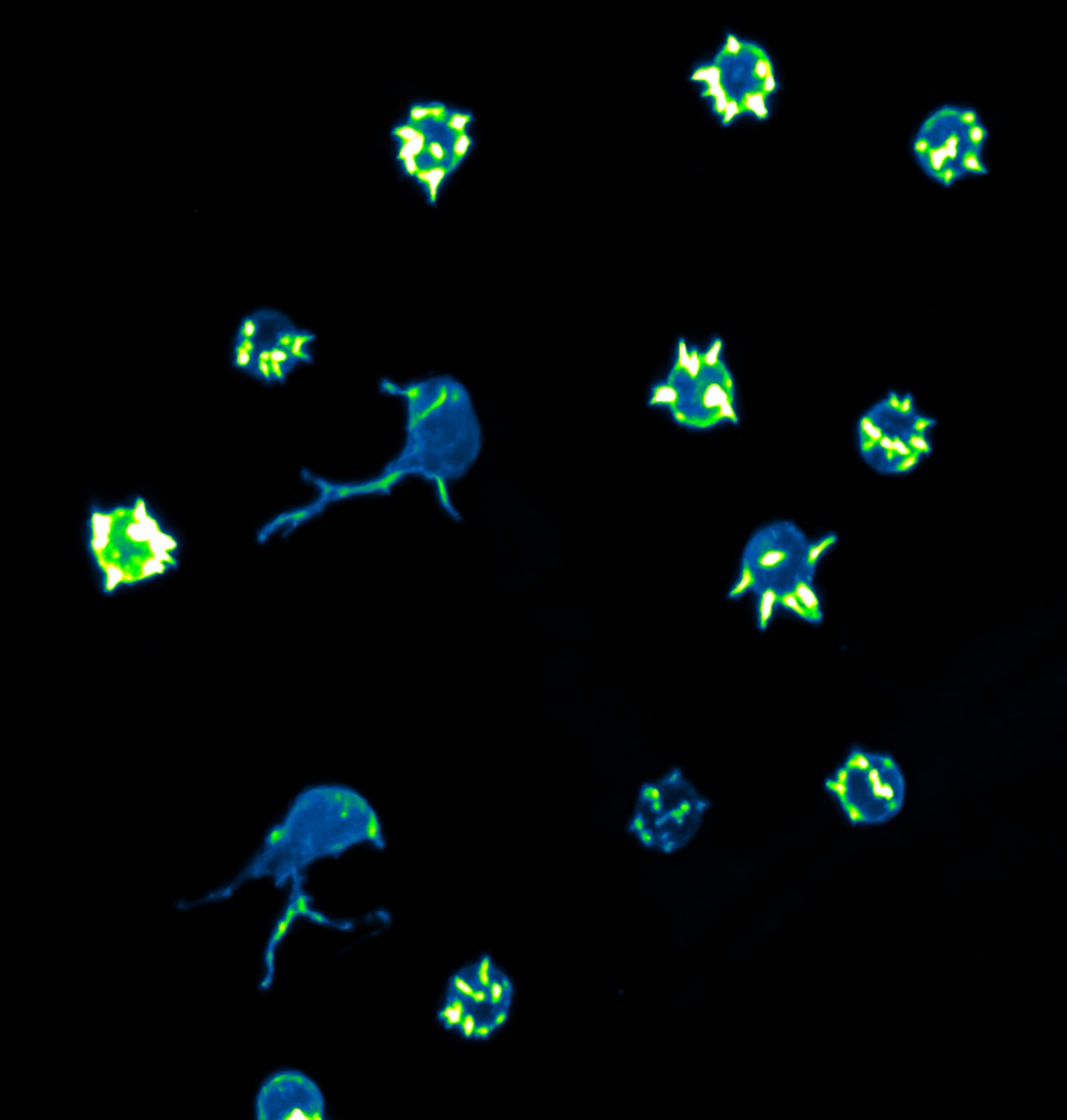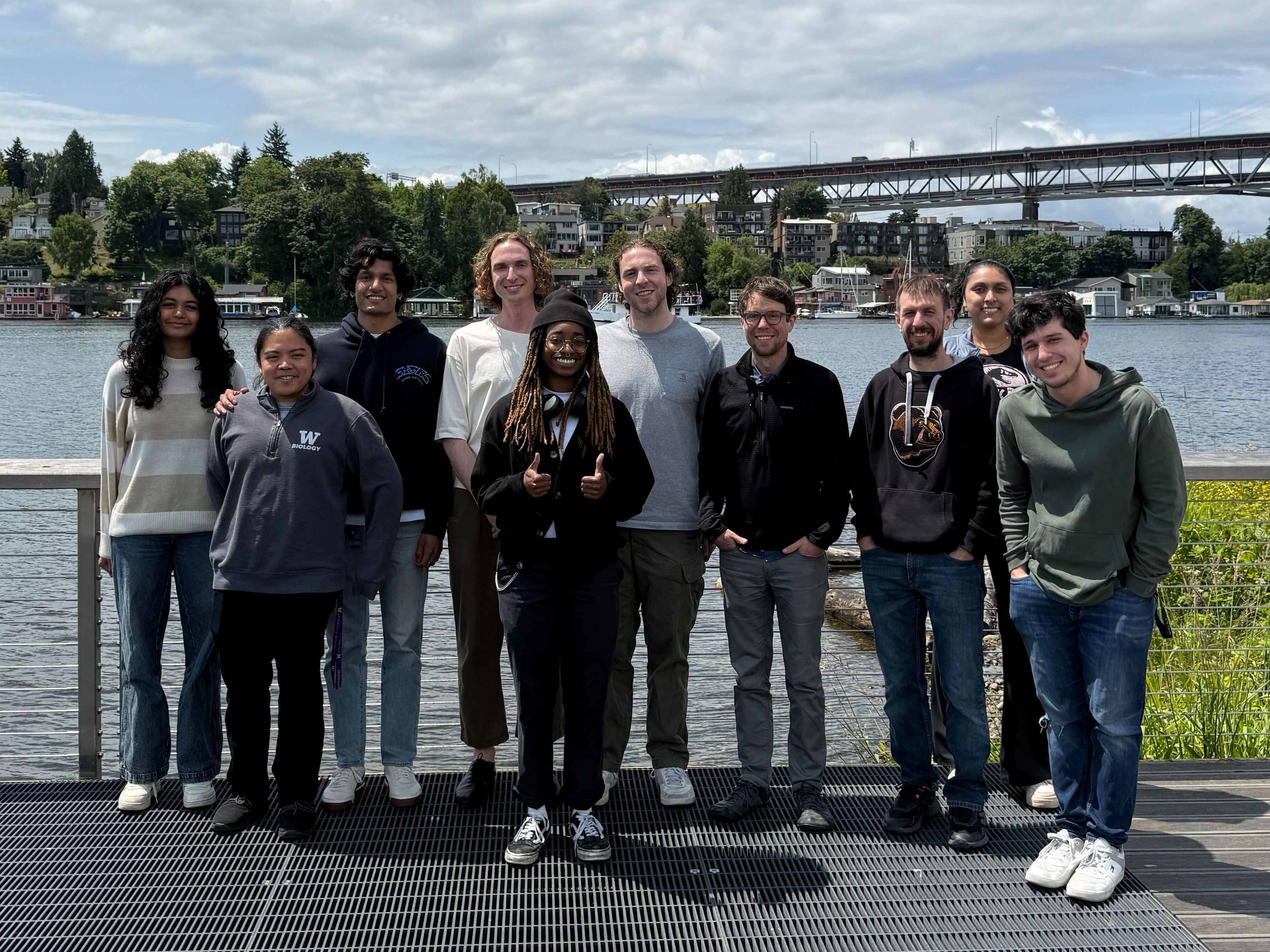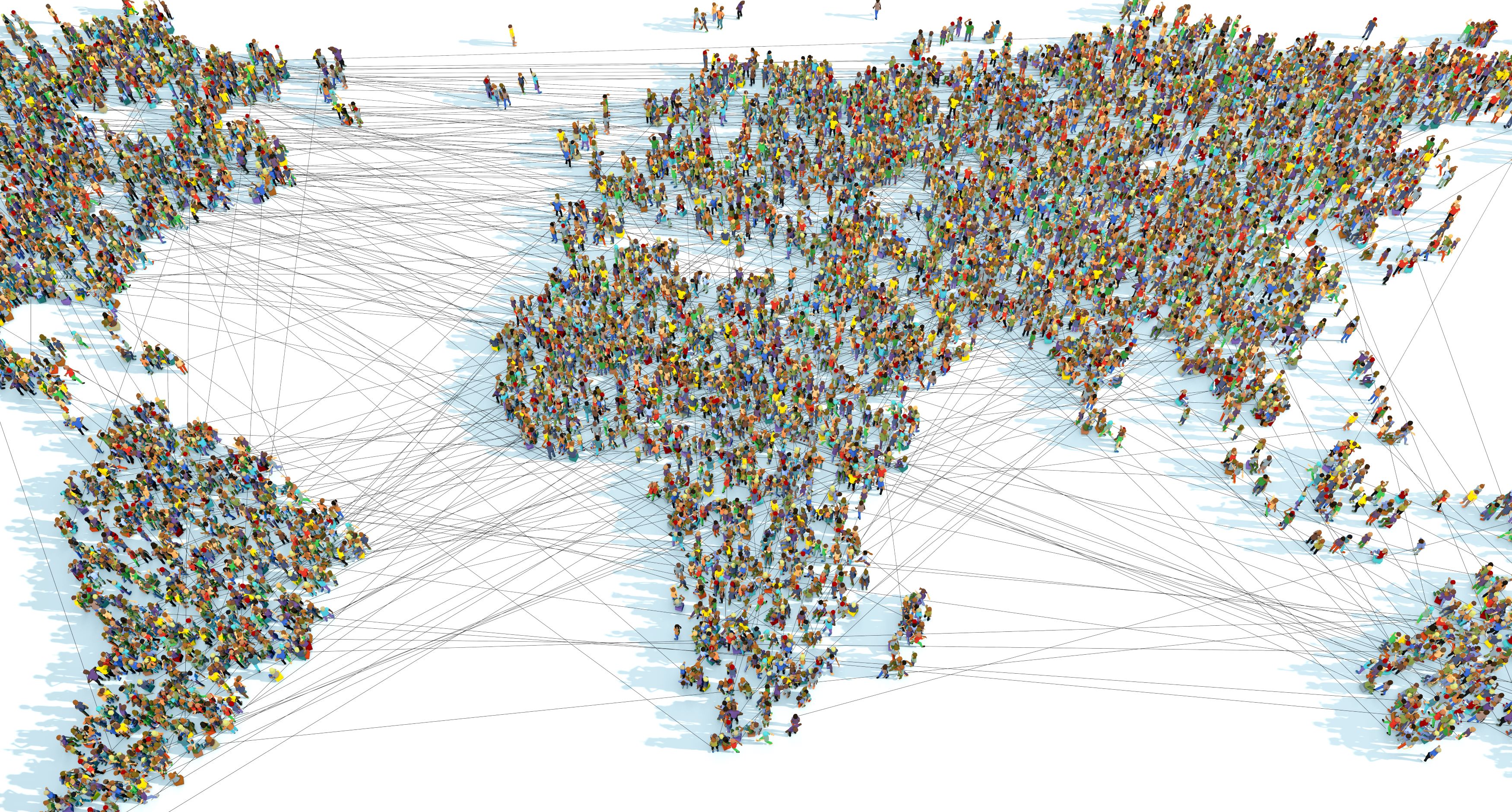
Rasmussen Lab's Zebrafish Model Provides New Insights into Normal Merkel Cell Development



Jeff Rasmussen, PhD, a member of the MC3 Institute, leads a developmental biology lab at the University of Washington focused on skin development and regeneration. The lab uses zebrafish as a model due to its accessibility to in vivo imaging and genetic manipulation.
In a recent publication, Jeff and his team describe the discovery of a transitional cell type, dendritic Merkel cells (dMCs), that connects keratinocyte progenitors to mature touch-sensitive Merkel cells.
This work reveals how actin cytoskeletal remodeling and Ectodysplasin A signaling drive progenitors to adopt the specialized Merkel cell shape.

(l-r): Nina Shetty, Elgene Quitevis, Sunny Dighe, Erik Black, Sade Onibokun, Graham Robertson, Jeff Rasmussen, Eric Peterman, Sam Fernandes and Seb Wojtowicz
In the Q&A below, Jeff shares his thoughts on this study and his lab's ongoing work.
Why does this study matter?
The cellular and molecular mechanisms that give rise to Merkel cells have been of long-standing interest to developmental and sensory biologists. For example, ultrastructural studies in the 1970s identified “transitional cells” that displayed hybrid properties between basal stem cells and MCs, providing some of the first evidence that MCs derive from epidermal progenitors.
Later immunofluorescence-based studies identified cells stained by MC-specific antibodies (cytokeratins 18 and 20) but with distinct, dendritic morphologies. These “dendritic Merkel cells” (dMCs) have since been observed in several types of vertebrate skin, including human fetal skin. However, any clear connection between transitional cells, dMCs, and Merkel cells has remained unclear, but is highly relevant to understanding Merkel cell ontogeny.
Our manuscript directly addresses this knowledge gap using a combination of live imaging, molecular analysis and genetics. We found that zebrafish dMCs exhibit molecular properties of both basal stem cells and Merkel cells, leading us to propose that transitional cells and dMCs represent similar cellular intermediates. Surprisingly, in contrast to epithelial-like Merkel cells, dMCs exhibit mesenchymal-like behaviors and migrate locally within the epidermis before directly maturing into Merkel cells.
Lastly, we demonstrate that Ectodysplasin A signaling, a conserved regulator of skin development, is required for the proper morphologies of dMCs and Merkel cells. So our study is significant because it identifies the immediate precursors to Merkel cells and describes their cellular behaviors.
What can intermediate cell states teach us about how cells specialize, regenerate, and sense their environment?
One of the exciting findings from our study, which we uncovered by live-cell imaging, is that Merkel cell and their precursors are much more dynamic that previously thought. The ability of dMCs to migrate through the epidermis suggests that their maturation within the skin is likely regulated by specific cues produced in the microenvironment.
Uncovering the nature of these cues will be an important next step to understanding the regulation of this intermediate cell state and the Merkel cell lineage.

Could these insights be relevant to Merkel cell carcinoma?
Yes, I believe so. There is a need to develop new therapies and innovative approaches for Merkel cell carcinoma (MCC) for the subset of patients ineligible or who do not respond to current treatment options.
To this end, it is critical to understand the molecular and cellular basis of Merkel cell development, as these processes may be co-opted during the initiation and metastasis of MCC. Our studies in zebrafish uncovered the direct precursors to Merkel cells and found that these cells display invasive, mesenchymal behaviors and can enter the cell cycle.
These observations suggest that the progenitor cell type we identified could serve as a potential cell of origin for MCC. Moreover, although MCC has a high likelihood for metastasis, the mechanisms that drive MCC invasion remain poorly understood. Thus, learning more about the molecular basis for the migratory behaviors we observed could ultimately provide ways to block the spread of MCC.
What are next steps for this project?
We our currently following up on our live-cell imaging experiments through the creation of a single-cell RNA-sequencing dataset targeted to capture dMCs during skin regeneration. By analyzing this dataset, we have identified a previously unappreciated step-wise sequence of molecular changes during Merkel cell maturation.
We are currently validating and testing key aspects of our model. More broadly, we are interested in questions related to: 1) Merkel form and function; 2) spatial patterning of Merkel cells across different skin regions; and 3) how our zebrafish work can best complement other existing systems.
What kinds of collaborators are you hoping to connect with- clinicians, model organism experts, sensory biologists?
One of the things that excites me about the MC3 Institute is the opportunity to interact with experts at all of these levels!



